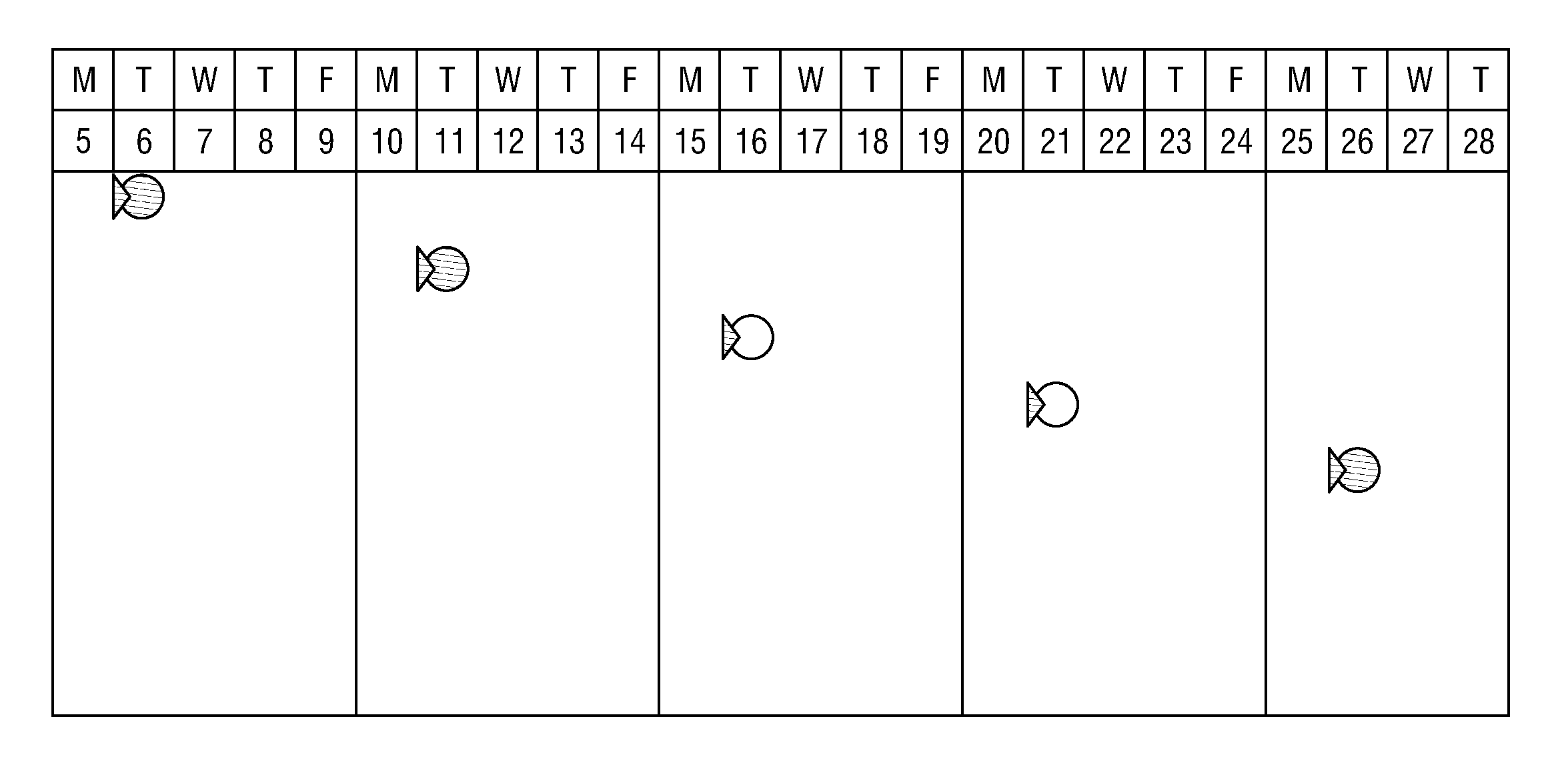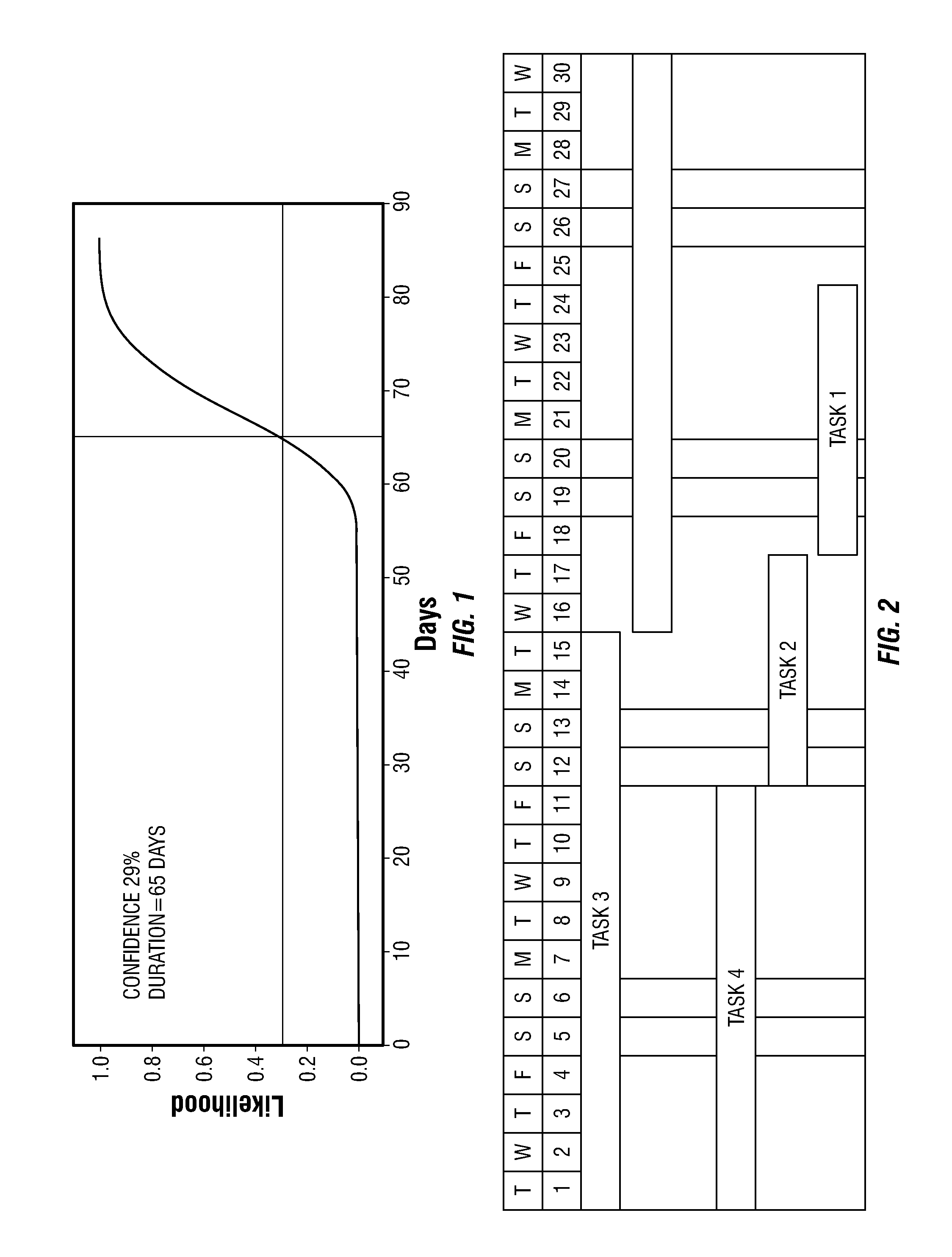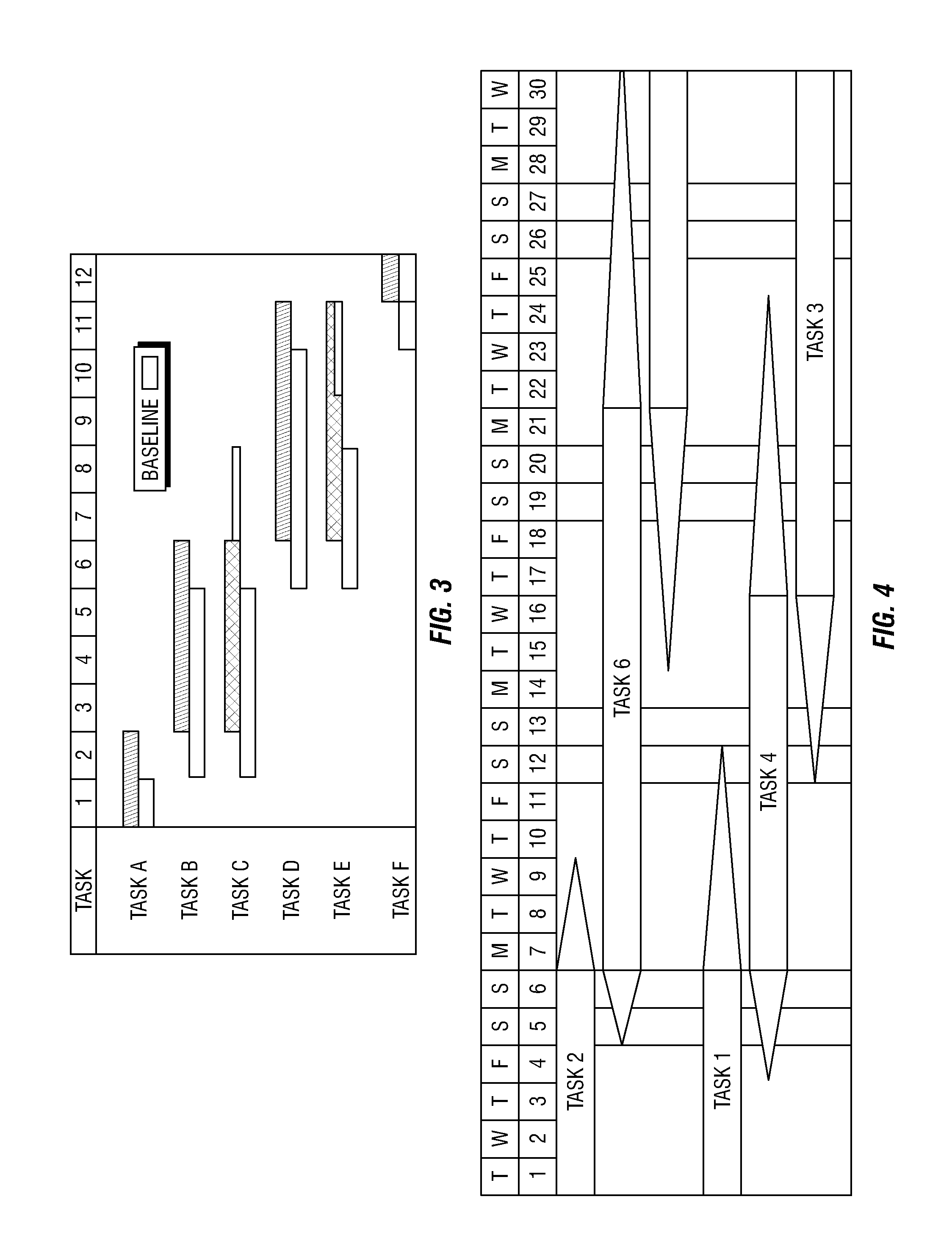Determining a Critical Path in Statistical Project Management
a critical path and statistical project technology, applied in the field of determining a critical path in statistical project management, can solve the problems of requiring either expert advice or historical data, engineering development projects typically entail a great deal of unknowns, and techniques that take time and some expertise to apply, so as to optimize the project's performan
- Summary
- Abstract
- Description
- Claims
- Application Information
AI Technical Summary
Benefits of technology
Problems solved by technology
Method used
Image
Examples
Embodiment Construction
[0040]Referring now to the drawings wherein like reference numerals refer to similar or identical parts throughout the several views, and more specifically to FIG. 7 thereof, there is shown an apparatus 10 for a Gantt chart. The apparatus 10 comprises a processing unit 12 which determines a range of dates for an end date for completing a task. The range comprises a first date and a final date. The apparatus 10 comprises a display 14 which shows the range of dates for the task completion. The display 14 may be an electronic display, such as a terminal screen, or piece of paper which has the range of dates on it.
[0041]The processing unit 12 may determine a range of a project end date from a range of end dates for all tasks of the project. The processing unit 12 may establish dates for each task end date based on a completion date for the project. The processing unit 12 may produce a strip for the display 14 that shows the range in which the task can occur, the strip having a head and ...
PUM
 Login to View More
Login to View More Abstract
Description
Claims
Application Information
 Login to View More
Login to View More - R&D
- Intellectual Property
- Life Sciences
- Materials
- Tech Scout
- Unparalleled Data Quality
- Higher Quality Content
- 60% Fewer Hallucinations
Browse by: Latest US Patents, China's latest patents, Technical Efficacy Thesaurus, Application Domain, Technology Topic, Popular Technical Reports.
© 2025 PatSnap. All rights reserved.Legal|Privacy policy|Modern Slavery Act Transparency Statement|Sitemap|About US| Contact US: help@patsnap.com



